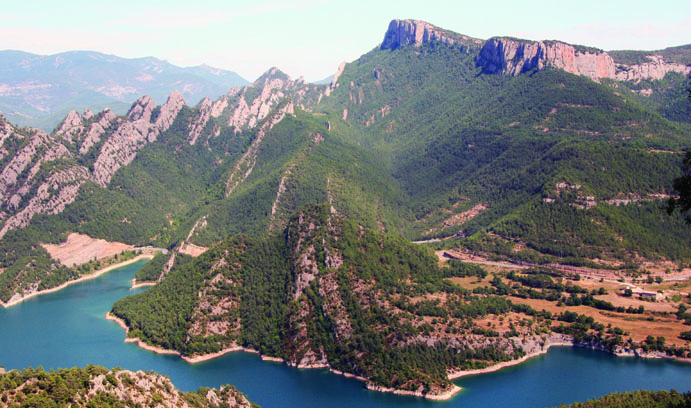Tectonic Rates

David Anastasio's research is shedding new light on coastal uplift in Spain and reconstructing the speed at which mountains form.
Geologist David Anastasio, together with a team of Lehigh students, traveled last fall to northern Spain to examine rock formations as part of an effort to better understand the time-based variation in tectonic rates and what controls them.
Anastasio, professor and chair of earth and environmental sciences, studies locations where there is evidence of ancient mountain building preserved in sedimentary strata. Employing a novel approach, Anastasio and his students use the record of natural climate changes that reoccur in cycles of 20,000, 40,000 and 100,000 years to date deformation processes. This long-term climate variability, known as Milankovitch cycles, results from variations in Earth’s orbit, which controls the incidence of solar energy reaching the Earth and causes environmental change.
The rocks record these changes, and Anastasio and his team measure varying mineralogy. These data allow the researchers to date the syntectonic rock layers with high resolution to reconstruct how deformation progressed through time. Funded by the National Science Foundation, Anastasio and his team are investigating the causes of rock deformation over time spans of tens to hundreds of thousands of years to determine whether they are related to changes in tectonic boundaries or to changes in the rates of erosion and deposition at the Earth’s surface.
“Because the rates of surface processes and tectonic processes are both varying over the same time windows, their cause and effect relationships can be explored,” says Anastasio. “Learning about one earthquake event doesn’t tell you much about future hazards. I can get a snapshot of deformation every 20,000 or 40,000 years for millions of years in a rock that’s hundreds of millions of years old. The more we’re learning about variation in the pace of deformation, the better we get at understanding what triggers the unsteadiness in uplifts and faults that cause earthquakes and builds mountains.”
Posted on:

